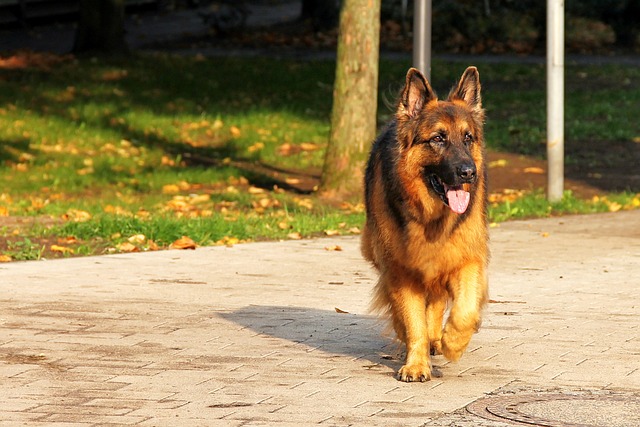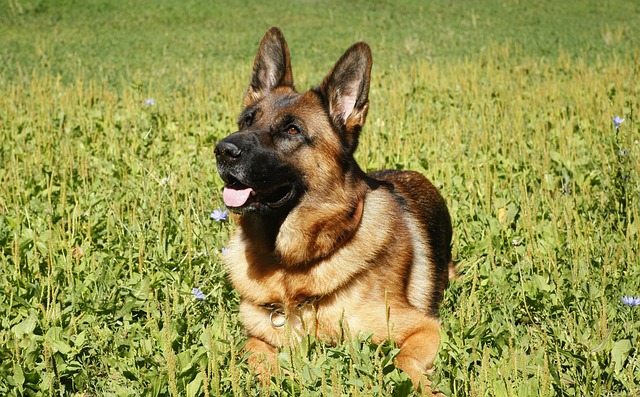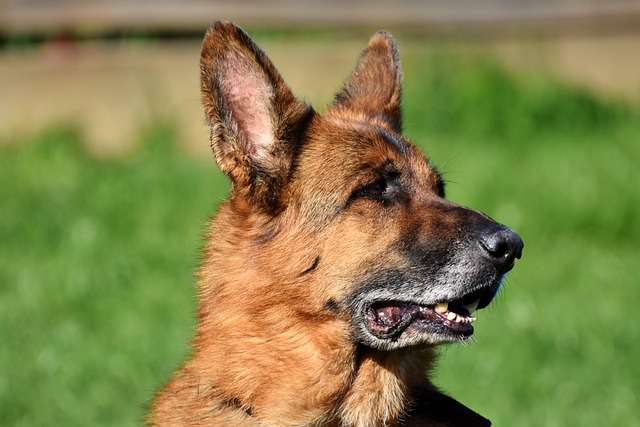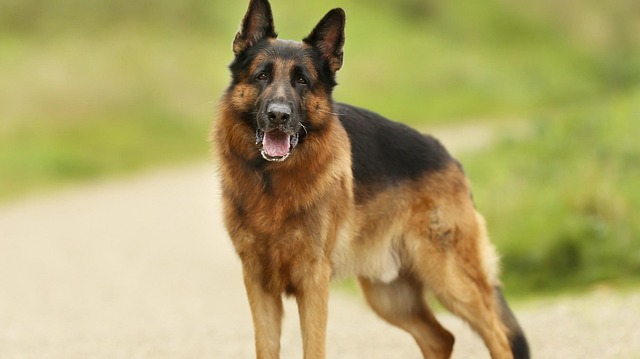Red German Shepherds captivate people with their stunning coat color and commanding presence. These magnificent dogs reach heights of 22-26 inches and weigh between 50-90 pounds. Their remarkable intelligence and loyalty complement their beauty perfectly. The American Kennel Club recognizes their distinctive red coloration as one of eleven official color variations for the breed.
A red GSD needs significant attention and care at home. Active families will find perfect companions in these energetic dogs that need 40 minutes to 3 hours of exercise daily. Black and red German Shepherds showcase the most common standard colors with their beautiful contrast of deep black and vibrant red fur. German breeders first developed these dogs in 1899 to herd and guard sheep. Today, they excel as versatile working animals. You might want to think over getting red German Shepherd puppies from a breeder at $1,000-$3,000 or learning about adoption possibilities. This piece helps you decide if this loyal breed matches your lifestyle, given their 7-10 year lifespan.
The Origins and Rise of the Red German Shepherd
The German Shepherd’s distinguished lineage started in late 19th-century Germany. Local shepherds started breeding dogs that showed ideal traits for herding and guarding livestock. These early working dogs looked quite different from each other, but they became the foundation of today’s red German Shepherd.
How the Red German Shepherd came to be
The German Shepherd breed’s systematic development took off in the 1890s when the Phylax Society created standardized plans for native German dog breeds. This marked a radical alteration in breeding practices that focused on both temperament and appearance. The foundation was set for various color patterns, including the striking red and black combination many dog lovers prize today.
The breed’s color genetics tell an amazing story. German Shepherds get their red coloration from specific genetic expressions. Sable GSDs have hairs with black tips and bases, plus reddish or cream coloring in between – this is different from how other breeds define sable. The black-and-tan or saddle-tan pattern comes from either a tat or a ta genotype, which creates that classic red and black German Shepherd look.
The role of Max von Stephanitz
The breed’s story changed forever. Captain Max von Stephanitz, a former cavalry officer and Phylax Society member, bought a dog named Hektor Linksrhein at a dog show. He saw Hektor’s exceptional qualities and renamed him Horand von Grafrath, registering him as the first official German Shepherd Dog. In 1899
Von Stephanitz lived by his motto: “Utility and intelligence.” Beauty came second to functionality in his mind. He carefully created a breed standard that covered every aspect of structure, gait, and temperament. Through the selective inbreeding of Horand and his brother Luchs, von Stephanitz combined the bloodline that became the foundation of every German Shepherd today.
Why does the red color stand out
German Shepherds’ rich red pigmentation has grown more desirable as time passed. The deep red (often called mahogany) creates a beautiful contrast with the black saddle pattern, unlike traditional black and tan coloring. Some enthusiasts focused heavily on breeding the richest reds possible, but experienced breeders warn that color should never matter more than temperament, health, and conformation.
The black and red coloring that people love today became popular in the 1980s. Breeders Walter and Hermann Martin pushed for the black and red type because they thought dogs with too much black looked “unfriendly.” Heavy linebreeding on influential dogs like Quanto and Canto von der Wienerau helped create this distinctive look that defines today’s show lines.
What Makes the Red German Shepherd Unique

Black and red German Shepherds stand out with several unique qualities beyond their stunning looks. Dog lovers worldwide are drawn to their distinctive silhouette with that vibrant mahogany coat.
Red vs. black and tan German Shepherds
The color pattern sets red German Shepherds apart from their traditional counterparts. These dogs showcase a instead of classic tan markings, which creates a striking contrast with their black saddle and mask. Show rings often feature these dogs because of their remarkable appearance. The black and red combination ranks among the most common standard colors that the American Kennel Club recognizes. A recessive gene creates the red coloration, though it’s one of the more dominant among the recessive fur color genes. rich, deep auburn or mahogany color
Temperament and behavior traits
Red German Shepherds possess the same outstanding temperament as their black and tan siblings. These confident and brave dogs showcase remarkable intelligence. Their steadfast dedication defines their character—they build strong bonds with their families.
These quick-learning companions to stay healthy both physically and mentally. They might turn destructive or develop bad habits without enough activity. Their problem-solving skills and enthusiasm to learn commands make them excellent working dogs. need 40 minutes to 3 hours of exercise daily
Common myths about Red GSDs
Red German Shepherds face several misconceptions despite their popularity:
- Myth: Red German Shepherds are a separate breed
- Truth: They’re just a color variant of the standard German Shepherd
There’s another reason people misunderstand these dogs – the belief that red GSDs show more aggression than other colors. Training, socialization, and genetics shape temperament, not coat color. Some people think older red GSDs can’t form new bonds, but these dogs can create meaningful relationships at any age.
Caring for a Red German Shepherd Dog

Proper care is the lifeblood of a healthy life for your red German Shepherd dog. These magnificent animals need specific attention to stay physically and mentally healthy throughout their lives.
Exercise needs and daily routines
Adult red GSDs need. They thrive on walks, runs, and playtime because of their high-energy nature. Puppies need a different approach – give them 5 minutes of exercise per month of age, twice daily. This simple rule helps prevent joint problems as they age. At least 90 minutes of exercise daily
A balanced daily schedule should include morning and evening walks with playtime between them. Your dog’s intelligent mind stays sharp with mental stimulation through puzzle toys and different walking routes.
Training tips for Red GSDs
Your red German Shepherd puppy’s training should begin the day they arrive home. These dogs shine at obedience training because of their extraordinary intelligence and desire to please.
Positive reinforcement works best – reward good behaviors with treats or praise instead of punishing mistakes. The same commands should be used daily for consistency. This breed needs early socialization as a vital step to help them distinguish between friendly and threatening strangers.
Health issues to watch for
Red German Shepherds often face these health conditions:
- Hip and elbow dysplasia (affecting 20.6% and 18.8% respectively)
- Degenerative myelopathy (14.1%)
- Bloat (GDV), which can be fatal without treatment
- Skin condition,s including allergies and dermatitis
Early detection through regular vet check-ups leads to better outcomes.
Feeding and grooming basics
Your red GSD needs high-quality food rich in protein and essential fatty acids. Food amounts vary by age, size, and activity level. Puppies need extra calories and protein to support their growth.
Brush your black and red German Shepherd every other day with a de-shedding tool like a Furminator. Regular brushing reduces shedding around your home. Baths should happen only when needed to protect natural oils. In addition, it helps to check ears weekly and trim nails monthly.
Finding and Raising Red German Shepherd Puppies

Starting a trip to bring home a red German Shepherd puppy needs research and preparation. These beautiful dogs should become part of your family only after careful thought.
Choosing a reputable breeder
A good breeder plays a vital role in getting a healthy red GSD. Look for breeders who do detailed health testing for conditions like hip dysplasia, degenerative myelopathy, and von Willebrand disease. Good breeders watch their puppies’ personalities and match the right puppy to your family. Stay away from puppies under 8 weeks old because they need their mother’s milk and social skills. The AKC Rescue Network lists over 40 GSD rescues, which suggests the breed’s popularity.
Adoption vs. buying
Each option has its benefits. Adoption costs between $100-$300, which is nowhere near the price from breeders. Your adoption saves two animals – the one you take home and the space it creates for another rescue. Buying from a breeder gives you access to your dog’s family history and often comes with health guarantees. Breeders can also help you find puppies with personalities that fit your lifestyle.
Cost of owning a Red GSD
The original purchase ranges from $800 for puppies without papers to $3,000 for AKC-registered puppies with health testing. The first year costs about $3,500 for vaccinations, grooming, food, and insurance. Yearly expenses drop to $500-$1,500 after that. Plan to spend around $15,000-$17,000 total over their 9-12 year lifespan. Training might cost extra ($80-$500 monthly) if behavior problems come up.
Preparing your home for a Red GSD puppy
Make your home safe before your puppy arrives by removing dangers like electrical cords and toxic plants. Set up specific areas for eating, sleeping, and potty training. Building a feeding stand helps prevent food spills and stress. You’ll need high-quality food made for German Shepherd puppies, right-sized bowls, a crate, and plenty of chew toys. These preparations help both you and your new red German Shepherd adjust better.
Conclusion
Red German Shepherds are exceptional companions for the right owner. These magnificent dogs blend a striking appearance with remarkable loyalty that makes them stand out among other canine companions. Their rich mahogany coat creates a dramatic contrast with the black saddle pattern. This beauty comes with big responsibilities though. The owner must provide consistent training and meet their substantial exercise needs throughout their life.
Getting a red GSD means you need to carefully consider your lifestyle and resources. These dogs’ intelligence means they just need mental stimulation along with physical exercise. Their health conditions require close monitoring and preventative care. The original purchase price ranges from $800-$3,000. You should also set aside $15,000-$17,000 for proper care over their 9-12 year lifespan.
Choosing between adoption and a breeder remains a personal choice. Adoption saves lives and costs a lot less. Reputable breeders provide lineage information and health guarantees. Either way, good research helps find a healthy red German Shepherd puppy that fits your family’s lifestyle.
The sort of thing I love is that red German Shepherds are just one of 15 types you might find while searching for your perfect canine companion. Each variety keeps the breed’s core traits of intelligence, loyalty, and versatility.
These exceptional dogs deserve owners who value their remarkable qualities and understand their specific needs. A well-trained and properly cared for red German Shepherd rewards you with steadfast dedication and protection. Their striking looks might catch your eye first, but their extraordinary character will without doubt capture your heart forever.
FAQs
Q1. What makes the Red German Shepherd unique compared to other German Shepherds?
Red German Shepherds are distinguished by their striking mahogany coat that contrasts beautifully with their black saddle pattern. While they share the same temperament and traits as other German Shepherds, their rich red coloration makes them stand out visually.
Q2. How much exercise does a Red German Shepherd need daily?
Adult Red German Shepherds typically require 90 minutes to 3 hours of daily exercise. This should include a mix of walks, runs, and playtime to satisfy their high-energy nature and keep them mentally stimulated.
Q3. Are Red German Shepherds good family dogs?
Yes, Red German Shepherds can make excellent family companions. They are known for their loyalty, intelligence, and protective nature. However, they require proper training, socialization, and plenty of exercise to thrive in a family environment.
Q4. What are the potential health issues to watch for in Red German Shepherds?
Common health concerns for Red German Shepherds include hip and elbow dysplasia, degenerative myelopathy, bloat (GDV), and various skin conditions. Regular veterinary check-ups are essential to catch and address these issues early.
Q5. How much does it cost to own a Red German Shepherd?
The initial cost of a Red German Shepherd puppy can range from $800 to $3,000. Annual expenses for food, grooming, and veterinary care typically fall between $500 and $1,500. Over their 9-12 year lifespan, owners can expect to spend approximately $15,000 to $17,000 in total.
